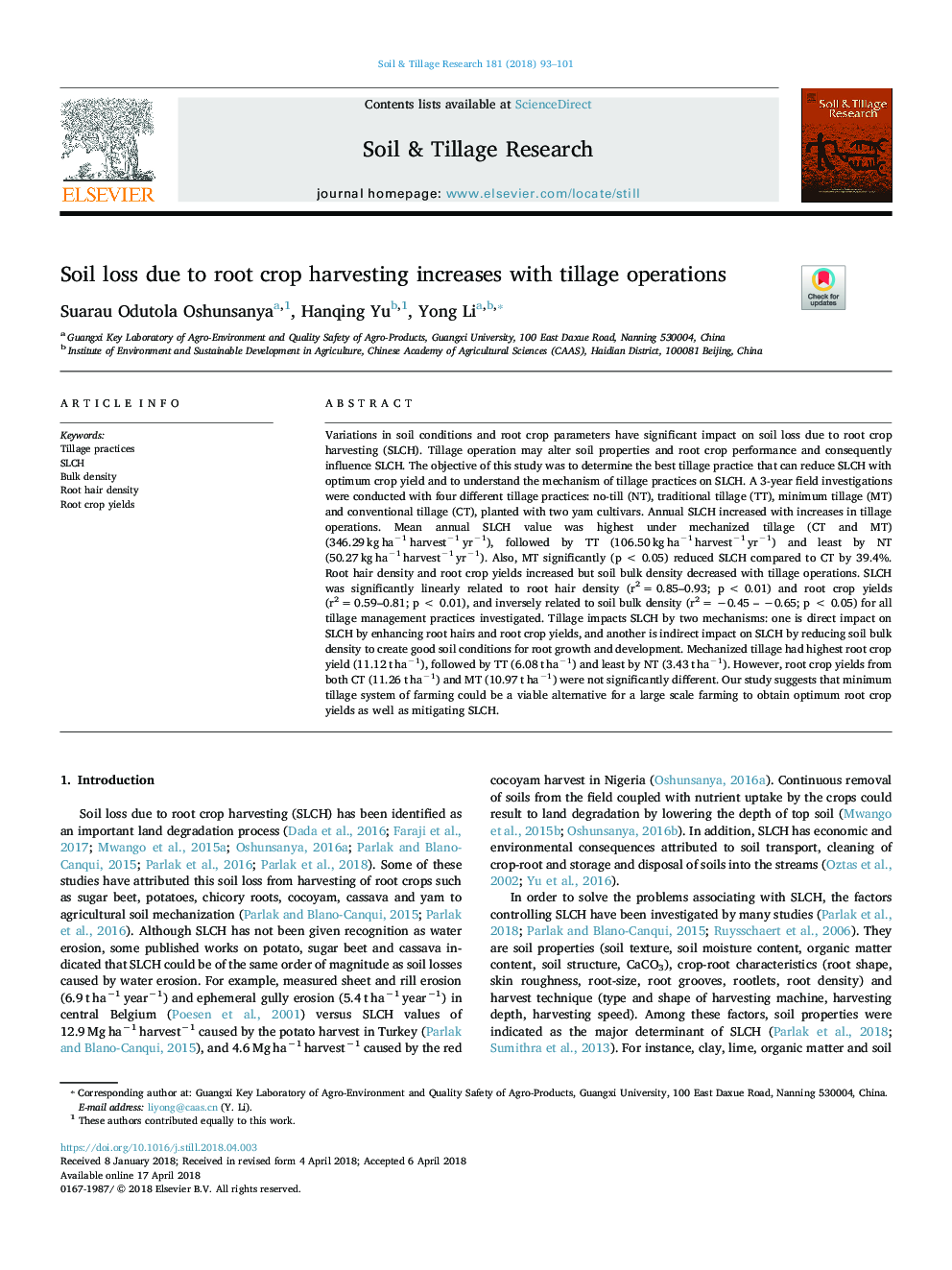| Article ID | Journal | Published Year | Pages | File Type |
|---|---|---|---|---|
| 6773018 | Soil and Tillage Research | 2018 | 9 Pages |
Abstract
Variations in soil conditions and root crop parameters have significant impact on soil loss due to root crop harvesting (SLCH). Tillage operation may alter soil properties and root crop performance and consequently influence SLCH. The objective of this study was to determine the best tillage practice that can reduce SLCH with optimum crop yield and to understand the mechanism of tillage practices on SLCH. A 3-year field investigations were conducted with four different tillage practices: no-till (NT), traditional tillage (TT), minimum tillage (MT) and conventional tillage (CT), planted with two yam cultivars. Annual SLCH increased with increases in tillage operations. Mean annual SLCH value was highest under mechanized tillage (CT and MT) (346.29â¯kgâ¯haâ1â¯harvestâ1â¯yrâ1), followed by TT (106.50â¯kgâ¯haâ1â¯harvestâ1â¯yrâ1) and least by NT (50.27â¯kgâ¯haâ1â¯harvestâ1â¯yrâ1). Also, MT significantly (pâ¯<â¯0.05) reduced SLCH compared to CT by 39.4%. Root hair density and root crop yields increased but soil bulk density decreased with tillage operations. SLCH was significantly linearly related to root hair density (r2â¯=â¯0.85-0.93; pâ¯<â¯0.01) and root crop yields (r2â¯=â¯0.59-0.81; pâ¯<â¯0.01), and inversely related to soil bulk density (r2â¯=â¯â0.45 - â0.65; pâ¯<â¯0.05) for all tillage management practices investigated. Tillage impacts SLCH by two mechanisms: one is direct impact on SLCH by enhancing root hairs and root crop yields, and another is indirect impact on SLCH by reducing soil bulk density to create good soil conditions for root growth and development. Mechanized tillage had highest root crop yield (11.12â¯tâ¯haâ1), followed by TT (6.08â¯tâ¯haâ1) and least by NT (3.43â¯tâ¯haâ1). However, root crop yields from both CT (11.26â¯tâ¯haâ1) and MT (10.97â¯tâ¯haâ1) were not significantly different. Our study suggests that minimum tillage system of farming could be a viable alternative for a large scale farming to obtain optimum root crop yields as well as mitigating SLCH.
Keywords
Related Topics
Physical Sciences and Engineering
Energy
Renewable Energy, Sustainability and the Environment
Authors
Suarau Odutola Oshunsanya, Hanqing Yu, Yong Li,
